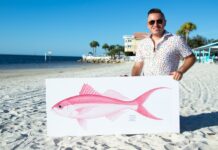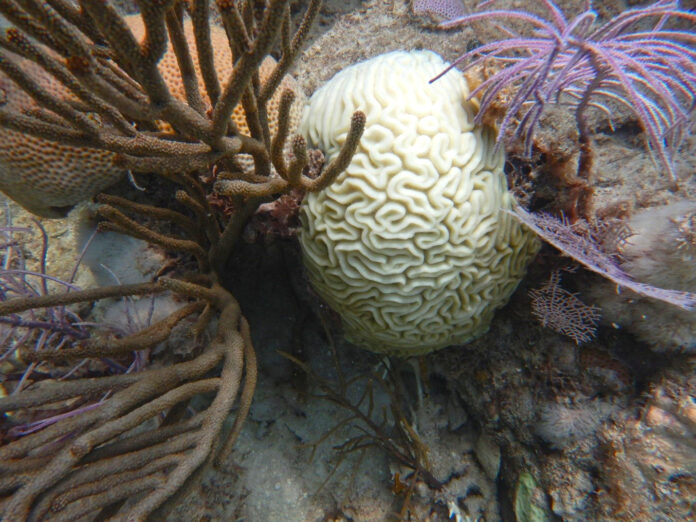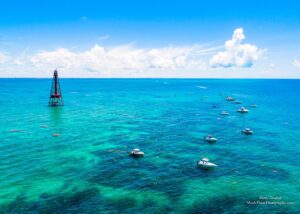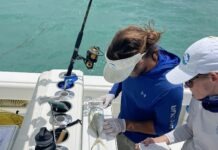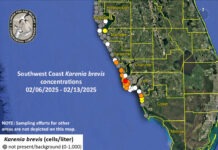Imagine you are accustomed to eating 2,000 calories per day. What if your diet was suddenly cut down to 300 calories per day? You could survive on 300 calories per day, but for how long? This is the issue facing bleached corals during the current marine heat wave.
What is coral bleaching?
Just like humans, corals become uncomfortable and stressed when they are outside of their temperature zone. Unlike humans, corals cannot put on shorts and a tank top, or turn on the air conditioning. Corals in the Florida Keys are comfortable when water temperatures are 73 to 84 degrees Fahrenheit. Once the temperature exceeds 88 degrees, corals may start to spit out the microscopic algae, called zooxanthellae, which lives inside each coral polyp and supplies more than 85% of their food. In addition to supplying most of the coral’s nutrition, the zooxanthellae provide the coral’s color. This is why coral bleaching turns the coral polyps transparent and you can see the white mineral skeleton underneath. Corals use their tentacles to capture food, but this is a small percentage of their diet. When high temperatures occur over the short-term, coral paling and bleaching do not usually kill the corals because they can still find food, just not enough to survive more than a couple of weeks of above-average water temperatures. When the water temperature cools, the zooxanthellae regrow inside the corals. Unfortunately, if the food deficit lasts too long, these corals may die from starvation in addition to the stress of very hot water.
According to NOAA, the current sea temperatures in many locations in the Florida Keys are the warmest mid-summer water temperatures ever recorded. The current marine heat wave is concerning because it started early and NOAA forecasts a 70% to 80% probability that above-average ocean temperatures could persist until October. Long-term higher-than-average ocean temperatures are the result of humans burning fossil fuels that add greenhouse gases to the atmosphere. We have recently entered an El Nino weather pattern, which is a weakening of the trade winds around the equator. In addition to high temperatures, we have not had very many windy days, rain, or cloud cover that help reduce temperatures. Windy days, ocean currents, waves and tides help to mix the ocean water and can bring cooler water from the seafloor and offshore. As a result of the current marine heat wave, the coral restoration agencies and the Florida Fish and Wildlife Conservation Commission have been moving the nursery corals to land-based facilities or out to deeper cooler water.

What can I do? Report coral bleaching and healthy corals. Your photographs are an important tool used by scientists.The Florida Department of Environmental Protection Southeast Florida Action Network has a citizen reporting tool at SEAFAN.net. You can submit up to 10 photographs and there is a map to set a pin with the location of your observations. Data showing where corals look healthy is just as important as knowing the locations where they are bleached or paling. Your data will be available to scientists and there is a public BleachWatch dashboard where you can see your anonymous report.











